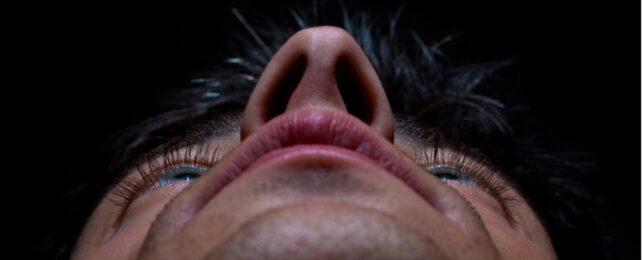Thanks to our clever brains, it's not immediately noticeable to us, but our two nostrils are actually working independently in some ways and appear to have their own separate sense of smell.
That's the conclusion of a new study from researchers in the US that could teach us much more about the brain and how senses are processed.
The findings build on earlier studies in animals and humans, indicating that our brains might be capable of processing each nostril's input individually as well as synthesizing them into one complete whole.
"Despite extensive work on odor responses in the olfactory system, relatively little is known about how information from the two nostrils is integrated and differentiated in the human olfactory system," write the researchers in their published paper.
To look more closely at smelling in stereo, the researchers from the University of Pennsylvania, the Barrow Neurological Institute, and Ohio State University enlisted the help of 10 epilepsy patients who had already had electrodes implanted in their brains.
One of three different scents, as well as a control consisting of pure air, was puffed into either nostril or both together in each trial. After several seconds, the subject was asked to identify the smell, then state which nostril they used to detect it - left, right, or both. Meanwhile, the researchers collected data on the brain's response via the electrodes.
The team made a number of interesting observations. For example, when the same smell was presented to each nostril in turn, the resulting brain activity was similar, but not identical, suggesting some independence.
What's more, smelling through two nostrils together created two distinct bursts of activity. Though the time delay between them was very short, it was there, and the researchers suggest that this again points to the nostrils not always being in unison.
Two nostrils were better than one when it came to identifying odors and identifying them more quickly, which hints that there's definitely some benefit to having two nostrils rather than one – as with eyes and ears.
The analysis concentrated on the piriform cortex (PC) brain region, where the sense of smell is handled and interpreted. As we already know, our different senses are closely interconnected too, which means the findings may have implications beyond smell.
Earlier research has shown that rats can "smell in stereo", using both nostrils to identify where a smell is coming from. The team behind this new study now wants to investigate whether this happens with humans too, and how the differences in timing and "odor coding" in the nostrils are worked out in the brain.
"Odor information arising from the two nostrils is temporally segregated in the human piriform cortex," write the researchers in their published paper.
"Our findings have important implications for odor coding in the olfactory system and provide evidence that the human PC maintains distinct representations of odor information arising from each nostril through temporal segregation."
The research has been published in Current Biology.
